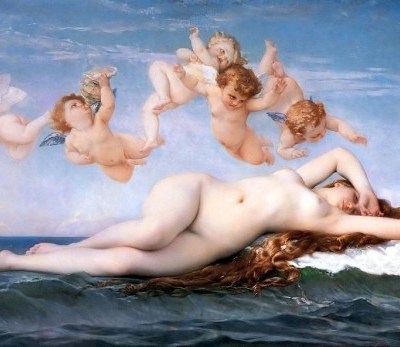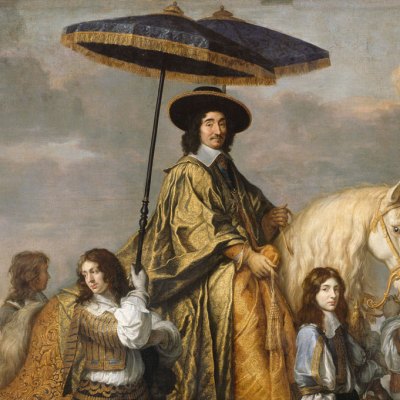In May 1968, as students rampaged through the streets of Paris, a rather more positive cultural event took place some 30 kilometres to the southwest. Vaux-le-Vicomte, the great 17th-century chateau, the precursor of Versailles, set in its magnificent formal garden, was fully opened to the public for the first time. Given that there is no tradition of country-house visiting in France as there is in Britain, and that it is usually complacently assumed that the state is responsible for le patrimoine, it is all the more remarkable that this national treasure should have been brought into the public realm and superbly restored and maintained entirely by independent individuals. Today, it is the largest private property in France classified as an historic monument.
Vaux-le-Vicomte is celebrated partly because of its creator, Nicolas Fouquet – and his cruel fate. A protégé of Cardinal Mazarin, a politician, lawyer, and financier, Fouquet rose to become superintendent of finances in the early years of the reign of Louis XIV. He was also a collector and a great patron of the arts, a supporter of poets and playwrights. He bought a small fortified chateau near Melun in 1641 and planned to replace it with a modern palace, the finest in the kingdom. Work was largely complete in 1661, when he grandly entertained the young king with fireworks and a comedy by Molière. Thanks to the scheming jealousy of Colbert, Fouquet’s reward both for the lavish party and for restoring the state’s finances was to be arrested three weeks later. After a long trial, he was sentenced to banishment but this was overruled by Louis, determined to exert his authority, and Fouquet spent the rest of his life in prison.
Fouquet certainly built on a grand scale. To create his chateau and park, he cleared the site, removed a village, diverted a river and shifted huge amounts of earth. But the success of Vaux-le-Vicomte was due to his employment of the architect Louis Le Vau and the garden designer André Le Nôtre, both of whom would go on to work at Versailles on an even grander scale. Together, they made a complete work of art, a very French triumph of reason and geometry. The chateau itself, together with its outbuildings, pavilions and stables, is set in the centre of a precise grid of avenues, walls, and terraces, with the long, long axial vista going right through Le Vau’s favourite triple-arched porticoes on the house.
With its double-pile plan, the chateau was to some extent innovative, although its staircases are mean. It also seems a pity that Le Vau’s original proposal to combine red brick with Creil limestone was revised in favour of monochrome stone. Indeed, it must be admitted that, architecturally, it is not an unqualified success – without going as far as Ian Nairn (in Nairn’s Paris) who thought that ‘Vaux is monstrously and grindingly ugly.’ Anthony Blunt was more balanced when he wrote how the house ‘shows only too clearly Le Vau’s weaknesses as a designer […] There is a looseness in the use of the Orders […] also great indecision in the grouping of the main masses.’ The great bulge facing the gardens which reflects the oval shape of the huge Grand Salon seems unrelated to the composition, and is covered by a bald slate-covered dome plonked on top like a giant saucepan lid.
The Grand Salon at Vaux-le-Vicomte. © Béatrice Lécuyer-Bibal

About the interior, however, there can be no reservations. Grand rooms were created in a new style imported from Italy, in which stucco and gilding were combined with integrated ceiling paintings by the third great artist introduced by Fouquet, Charles Le Brun. The result was, wrote Blunt, ‘a compromise, a Baroque tamed to suit a northern taste’. In the King’s Bedchamber (in which no monarch ever slept), Le Brun’s paintings fill the ceiling coves between a mass of cherubs, angels, cornucopia, lions, and much more. In the Salon des Muses, a whole ceiling painting by Le Brun hovers above more Muses in the alcoves. The effect is sumptuous, but disciplined. And then there is Le Nôtre’s spectacular attempt to ‘civilise nature’: a pattern of parterres, pools, fountains, and avenues stretching far away from the house towards distant trees. At first the gardens seem but an exercise in formality, but the plan is not in fact rigidly symmetrical across the axis and there are brilliant surprises, such as grottoes, the changes in level, and the transverse Grand Canal hidden in the distance.
The Salon des Muses at Vaux-le-Vicomte. © Daniel Delisle

Poor Fouquet was never able to enjoy this would-be paradise, and after his arrest much of the furniture and decorations were seized by the king. The Vaux estate was restored to the family in 1673, and during the 18th century was owned first by one of Louis XIV’s more successful marshals and then by the duc de Praslin. In 1793, during the Revolution, the chateau was to be destroyed, but the then duchess pleaded for time so that Le Brun’s paintings could be taken down for the nation. During the first half of the 19th century, the now unfashionable house and gardens were neglected, with disaster coming in 1847 when the 5th duke killed his wife and then himself. After that, Vaux-le-Vicomte was virtually abandoned and, in 1875, the estate was put up for sale with the expectation that it would be divided up and the house demolished for the value of the materials.
Salvation came in the shape of Alfred Sommier, a cultivated entrepreneur with a fortune from sugar refining. He bought the whole estate, and began restoring both chateau and gardens. In this, he enlisted the help of two experts in French art: Hippolyte Destailleur, the exiled Empress Eugénie’s architect, who designed Waddesdon Manor for Baron Ferdinand de Rothschild; and, for recreating Le Nôtre’s archetypal French garden, Elie Lainé (who laid out the gardens at Waddesdon). After the Great War, when Vaux-le-Vicomte served as a military hospital, Sommier’s son, Edme, completed the restoration of the gardens by employing Achille Duchêne to lay out the intricate pattern of broderie in the parterres. In addition to the noble endeavour of rescuing a great and important French chateau, what is impressive about the Sommiers’ patronage is that those interested in the arts could visit Vaux-le-Vicomte by appointment.
In 1945 Edme Sommier died with no heir, but he had bequeathed the estate to his nephew, Jean de Vogüé. It was Patrice de Vogüé who took on the house in 1968 and opened it permanently to the public. Since 2012, his three sons, Alexandre, Ascanio, and Jean-Charles, have continued with the hugely expensive task of restoring and maintaining the estate. Today, Vaux-le-Vicomte looks magnificent and attracts more than 300,000 visitors a year, a feat that has been accomplished without spoiling the property with the funfairs, zoos, and other such attractions once resorted to by some English country-house owners. But the unique success in France of Vaux-le-Vicomte owes much to our own experience. ‘I much admire the British for having paved the way in opening stately homes to the public,’ Patrice de Vogüé has written. And the excellent gift shop was inspired by that at Chatsworth.
From the February issue of Apollo. Preview and subscribe here.



